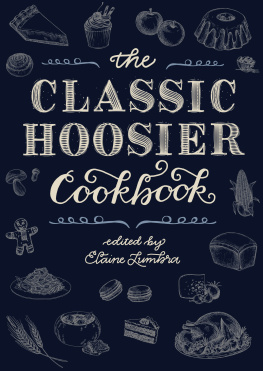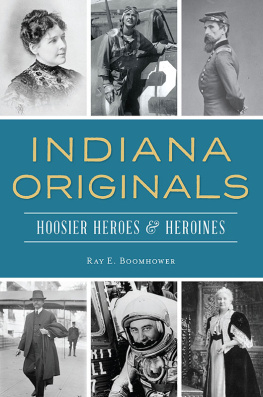

Copyright 2013 Paula Haney
All rights reserved. No part of this book may be reproduced or transmitted in any form or by any means, electronic or mechanical, including photocopying, recording, or by any information storage and retrieval system, without express written permission from the publisher.
Photo credits:
Dedication page and & Marc Klutznick
by Rob Warner
by Brian M. Heiser
by Debbie Carlos
(Allie and Avery Leavitt) by Brad Snyder
by Dan Zemans
by Steve & Anne Truppe of tr studio
Design by DesignScout.
Library of Congress Cataloging-in-Publication Data
Haney, Paula.
The Hoosier Mama book of pie : recipes, techniques, and wisdom from the Hoosier Mama Pie Co. / Paula Haney, with Allison Scott.
pages cm
Includes bibliographical references and index.
ISBN 978-1-57284-719-4 (ebook)
1. Pies. 2. Hoosier Mama Pie Company (Chicago, Ill.) 3. Cooking--Indiana. I. Scott, Allison. II. Title.
TX773.H256 2013
641.59772--dc23
2013008711
10 9 8 7 6 5 4 3 2 1 13 14 15 16 17
Midway is an imprint of Agate Publishing. Agate books are available in bulk at discount prices. For more information, go to agatepublishing.com.
FOR CRAIG, DASHIELL, AND ESME,
MY MOST ENTHUSIASTIC PIE TASTERS.

CONTENTS

When I unlocked the door there was already a line. It was March 14th, 2009, opening day at the Hoosier Mama Pie Companys new shop in the Ukrainian Village neighborhood of Chicago. After months of worrying if a bakery devoted to just one product could cover the rent, I had a new fear: Did I make enough pie?!
In two hours I had my answer: No way! We closed the shop, baked like crazy, and reopened. In an hour, the racks were empty again. Turns out I wasnt the only one craving a good slice of pie.
It had started out as a joke. My husband Craig and I made up a fictitious pie shop while I was the pastry chef at Trio, a fine dining restaurant just outside of Chicago. I was lucky enough to be working there when the owner brought in an unknown chef from California named Grant Achatz. For those who dont already know, Chef Achatz quickly set about reinventing American dining as we know it, earning Michelin stars and opening two acclaimed restaurants along the way. It was my small task to make desserts that kept up with his super-creative, boundary-pushing food. It was exhilarating and exhausting and on my days off, I went looking for the comfort of pie. Disappointed with what we found, Craig and I wondered what it would be like to open our own shop.
We wanted a place where you could sit down and have a slice of pie and a cup of coffee. Someplace where you could go to talk about the play you just saw, or read a book. But we also wanted it to be a place where pie was taken seriously. We would approach pie the same way I approached fine-dining desserts. We would use the best ingredients I could find, the best techniques I could learn, and no pie would make it onto the menu without multiple rounds of testing and tasting. The menu would change daily to reflect the best we could offer on any particular day.
At the end of that first day, my assistant Anne and I went home thrilled, but exhausted. I found out later that we both awoke in the middle of the night thinking the same thing, Oh no, we have to do this again tomorrow!
We quickly hired a dishwasher and two pie slingers to work the counter. Luckily, all three did a great job with little guidance while Anne and I interviewed baker after baker. The idea of a shop devoted to just pie was a new one, or, more precisely, an old one that had been forgotten, and it took a while to find good cooks who wanted to make the same unglamorous dessert day in and day out.
This wasnt always the case. In 1909, according to an article in the Chicago Daily Tribune, there were some 2,000 bakers making pies day and night for the growing city. In that year alone, according to the article, Chicagos 200,000 residents ate an astounding 70,000 pies a day.
In the early days of the 20th century, Chicago enjoyed at least a half-dozen pie companies, each with horse-drawn pie wagons that delivered to workmens cottages and businessmens clubs alike. In a 1911 advertisement in the Chicago Loxias, a local Ukrainian newspaper, the Case pie company boasted they could produce 14 pies a minute in their new clean and sanitary bakery. Sadly, by the late 80s most of the old pie bakeries were gone, and most pie was bought from the freezer case at the grocery store.
By 2009, the mention of a shop devoted to just pie brought blank stares. Youre going to make cupcakes, too, right? was a frequent response. Several concerned and well-meaning chefs I knew offered to share some good cake recipes.
Why did pie fall from favor? Lives changed dramatically in the 20th-century United States. According to The First Measured Century, in 1900, most people lived in the country and made their living from farming. But just 40 years later, close to 60 percent of Americans lived in cities. City dwellers had access to restaurants and supermarkets. They didnt need to make a pie to use up the extra apples they had harvested or the green tomatoes that were left on the vine in the fall. They simply bought what they needed, when they needed it. Pie held on for a citified generation or two as mothers and later grandmothers cooked traditional recipes for their families, but folks soon forgot how great pie tastes at the end of a meal.
Because it no longer served a utilitarian purpose, pie became old-fashioned. People wanted to try the modern, sophisticated foods they saw in magazines or tasted on trips to Europe, as travel abroad was becoming faster and cheaper. While Americans strove for a new, more cosmopolitan lifestyle, pie became less and less popular.
Another factor is that making pie is a pain in the ass. You have to make the dough, peel the fruit, rest the dough, assemble the pie, and then bake it for an hour or more. As more and more women worked outside the home, fewer and fewer had time to spend an afternoon in the kitchen making a pie. In the professional kitchen, I know from experience that a single pie order can throw off the rhythm of an entire bakery. I can make 100 cupcakes in the time it takes to make a single apple pie. I knew that in order to be successful, I needed a bakery that ran on pie time.
What do I mean by pie time? Well, at Hoosier Mama the mornings start with making dough, and then loading it into the cooler to rest while the pastry cream production begins. By late morning, the dough is pulled out of the cooler for rolling and to make room for chilling the completed pastry creams. Some of the dough gets rolled, crimped, and put in the freezer to set; some gets rolled into doubles for fruit pies. By early afternoon, the crimped shells are pulled from the freezer for blind baking, just in time to make room for the assembled fruit pies. Pie sets the rhythm of the kitchen and leaves little time for cakes or cookies.
We started out small, renting time and space in a shared-use commercial kitchen to test our plan. We sold pies at local farmers markets and wholesale to coffee houses. We met some great farmers and started buying most of our produce directly from them. We baked seasonally, except for apple pie, which we offer year-round because, well, its apple pie. Its bad enough turning down all the requests for cherry pie in December!
Next page
















